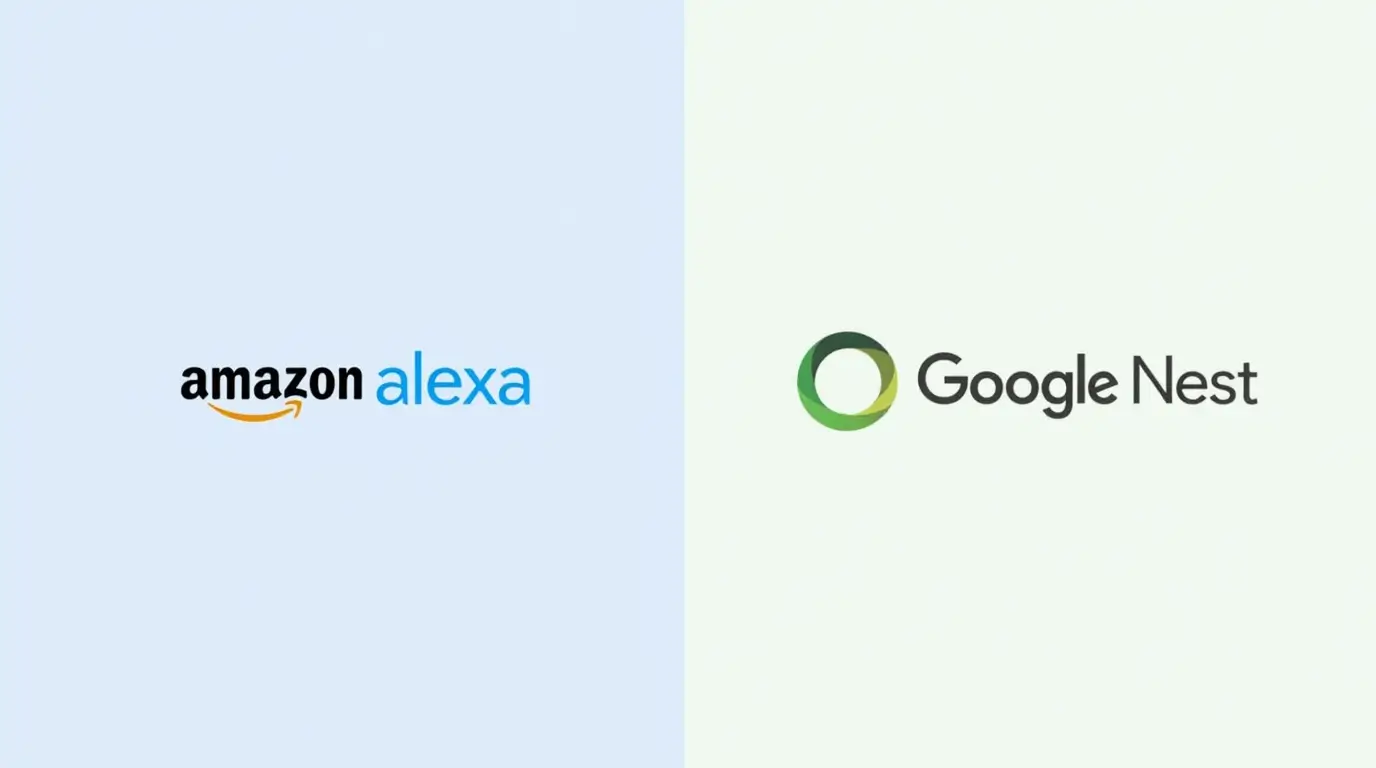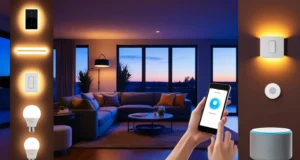Table of Contents
In today’s connected world, smart home technology is transforming the way we live, making our homes more efficient, secure, and fun. At the heart of this transformation are voice assistants that serve as the central hubs for managing everything from lights and locks to music and reminders. Two of the most popular smart home ecosystems are Amazon Alexa and Google Nest. While both platforms offer a wide range of smart home capabilities, they each come with unique strengths and weaknesses. This article will explore the key differences between these two ecosystems to help you choose the one that best suits your needs.
Voice Assistants: Command and Control
When it comes to voice assistants, both Amazon Alexa and Google Assistant are powerful, but they shine in different areas.
- Amazon Alexa tends to be better at understanding specific commands and controlling smart home devices. Its voice recognition is particularly sharp when it comes to integrating with a wide variety of third-party smart home products. This makes Alexa a top choice for users with an extensive smart home setup.
- Google Assistant, on the other hand, excels in natural language processing. It’s incredibly effective at answering general knowledge questions, providing detailed responses, and engaging in follow-up questions. For users who value a more conversational assistant, Google Assistant is often the better option. Its ability to handle multi-turn conversations makes it a standout for those looking for an assistant that feels more intuitive.
Both systems support voice matching, meaning they can provide personalized responses based on who’s speaking. This feature is helpful for families or households with multiple users.
Smart Home Integration: Which Platform Supports More Devices?
When it comes to smart home integration, both Alexa and Google Nest offer compatibility with major smart home brands like Philips Hue, Ring, and SmartThings, but there are some key differences.
- Alexa supports over 100,000 third-party devices, giving it the edge when it comes to sheer compatibility. Whether you’re adding new lighting, thermostats, or security cameras, Alexa likely has you covered. Its vast ecosystem of supported devices means you can create a more customized home automation setup.
- Google Nest excels at integration with Google’s own suite of services, such as Google Calendar, Google Maps, and Google Photos. If you’re heavily invested in Google’s ecosystem, the seamless integration with these services can make Google Nest a more appealing option. Additionally, Google Nest has a strong focus on home automation routines, though Alexa’s flexibility in this area is still a bit more robust.
Both systems allow for creating custom routines and automations, but Alexa provides more flexibility in setting up triggers and conditions.
Smart Speakers: Sound Quality and Variety
When it comes to smart speakers, both Amazon and Google offer a wide range of options to suit different preferences and budgets.
- Amazon Alexa offers a broader variety of Echo devices at different price points, ranging from the budget-friendly Echo Dot to the high-end Echo Studio. This makes it easier to find a device that fits your needs and budget. Many Echo devices also come with built-in smart home hubs, which means they can directly control Zigbee-enabled devices without needing a separate hub.
- Google Nest speakers, while fewer in number, are known for their better sound quality. The Google Nest Audio is often considered superior in terms of audio performance compared to most of Amazon’s offerings. However, Google’s minimalist design philosophy means that Nest speakers tend to focus more on aesthetics and simplicity.
If you prioritize audio quality, Google Nest might be the better choice, but if you’re looking for variety and flexibility, Amazon Echo is the way to go.
Display Devices: More Than Just a Screen
Both Alexa and Google Nest offer display devices, but they each have unique features that cater to different needs.
- Amazon Echo Show devices are available in a variety of screen sizes, from the compact Echo Show 5 to the larger Echo Show 10. These devices are great for video calls, streaming video, and displaying information such as the weather or calendar events. They also offer integration with smart home devices, allowing you to control lights, thermostats, and cameras with ease.
- Google Nest Hub devices, while more limited in screen size options, excel at photo display thanks to deep integration with Google Photos. If you’re a Google Photos user, the Nest Hub will automatically showcase your photos in high resolution. Additionally, the Nest Hub offers better recipe functionality and seamless integration with YouTube, making it a great companion for kitchen use.
Echo Show is the better choice for video calls, while Nest Hub excels in photo and media display.
Privacy Features: Protecting Your Data
Privacy is a growing concern for many users of smart home devices. Both Alexa and Google Nest have taken steps to address these concerns, though they handle privacy in slightly different ways.
- Both platforms include physical mute buttons to disable the microphones when not in use. This is a great way to ensure your conversations are private when you don’t need the assistant.
- Google Nest Hub Max comes with a camera shutter, which can be manually closed to disable the camera for extra privacy.
- Both Alexa and Google Nest allow users to delete their voice recordings, but Google is often praised for being more transparent about how it uses your data and for offering more granular controls over data collection.
Price Points: Budget-Friendly or Premium?
- Alexa devices generally offer more budget-friendly options, with several Echo models priced under $50. Regular sales and bundles can make these devices even more affordable, making them a great option for those looking to set up a smart home without breaking the bank.
- Google hardware, on the other hand, tends to be slightly more expensive. While both ecosystems offer similar pricing for flagship devices like the Echo Show and Nest Hub, you might find that Google’s devices are a bit pricier, particularly for models like the Nest Hub Max.
Unique Features: What Sets Them Apart?
- Alexa stands out with a range of unique features:
- Custom wake words, allowing you to personalize the voice assistant’s trigger phrase.
- A more extensive skills marketplace, providing thousands of third-party apps and integrations.
- Guard home security features, offering monitoring for break-ins or glass breakage.
- Shopping integration with Amazon, making it easy to reorder items with a simple voice command.
- Google Nest has some standout features of its own:
- Better multi-room audio, offering more seamless audio syncing across devices.
- Superior voice recognition, particularly for households with multiple users.
- Interpreter mode, which translates languages in real-time, making it ideal for multilingual households.
- Better integration with Android devices, making it a more seamless experience for Android users.
Conclusion: Which Ecosystem Is Right for You?
Choosing between Amazon Alexa and Google Nest depends largely on your preferences and existing ecosystem. If you value flexibility, a wide range of compatible devices, and extensive smart home controls, Alexa is likely the better choice. On the other hand, if you prioritize natural language processing, integration with Google services, and superior sound quality, Google Nest may be the way to go.
Both platforms offer excellent smart home ecosystems, and either one can serve as the backbone of your connected home. The key is to assess which features matter most to you and how you plan to integrate your smart devices into your daily life.
This comparison provides a detailed look at both systems, ensuring a comprehensive understanding of their features and differences. Let me know if you’d like me to adjust or expand any section further!




